![]()
Tuesday, October 13, 2015 | By Dr. Raz Zimmt
This article was originally published by the Meir Amit Intelligence and Information Center under the title “Brigadier General Hossein Hamedani, Senior Iranian Islamic Revolutionary Guards Corps Commander, Killed Near Aleppo, Syria”.
Overview

Hossein Hamedani briefs commanding officers on the situation in Syria (Tasnim News, October 9, 2015)
On October 8, 2015, Brigadier General Hossein Hamedani (Abu Wahab), a senior commander in the Iranian Islamic Revolutionary Guards Corps (IRGC), was killed in Syria. He served as a senior military advisor to the Assad regime.
There are various conflicting reports regarding the circumstances of his death: Ali Shamkhani, secretary of the Iranian Supreme Council for National Security, said he was killed in a car crash while on a reconnaissance mission (Fararu, October 11, 2015). The IRGC issued an official announcement claiming Hamedani had been killed by ISIS on the outskirts of the city of Aleppo (northern Syria). On the other hand, Ali Sabet, one of Hamedani’s close associates, claimed his car was ambushed by ISIS and caught fire, and that Hamedani was critically wounded and died in a hospital (Tabnak, October 11, 2015). His funeral was held in Tehran on October 11, 2015, and he was buried in his hometown, Hamedan.
Senior officials in the Iranian regime, among them Supreme Leader Ali Khamenei and President Hassan Rouhani, issued obituaries for Hossein Hamedani extolling his activities and long-time contribution to Iran. IRGC Commander Mohammad-Ali Jafari called Hamedani “a pillar of the resistance front against America and the “Zionist regime”” (Fars News Agency, October 9, 2015). Supreme Council for National Security Secretary Ali Shamkhani, Defense Minister Hossein Dehghan, Majlis Chairman Ali Larijani and Foreign Minister Mohammad Javad Zarif also publicly expressed condolences.
Although the death of Hossein Hamedani is a blow to Iranian morale. However in practice, it will not significantly influence Iran’s strategy in Syria or its support of the Syrian regime.
Other Senior Iranian Officers Killed in Syria
Hamedani was not the first senior Iranian officer killed in Syria. Several have died in recent years, some of them allegedly killed by Israel. For example on January 18, 2015, Mohammad Ali Allahdadi was killed in an aerial attack in the northern Golan Heights, which the foreign media claimed was carried out by Israel. He was killed in the same attack as Hezbollah operative Jihad Mughnieh (son of Imad Mughnieh), who headed a Hezbollah network in the northern Golan Heights. Two years previously Iranian General Hassan Shateri was killed in Syria; Iran accused Israel of responsibility.
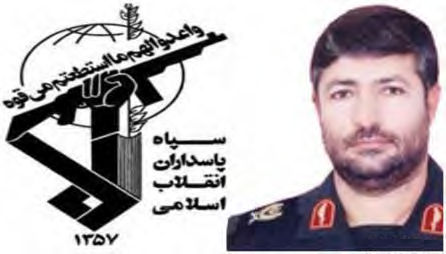
Left: The IRGC logo. Right: Mohammad Ali Allahdadi, senior IRGC officer, killed in the northern Golan Heights on January 18, 2015 (Website of the Jibshit municipality, January 19, 2015)
Short Biography of Hossein Hamedani
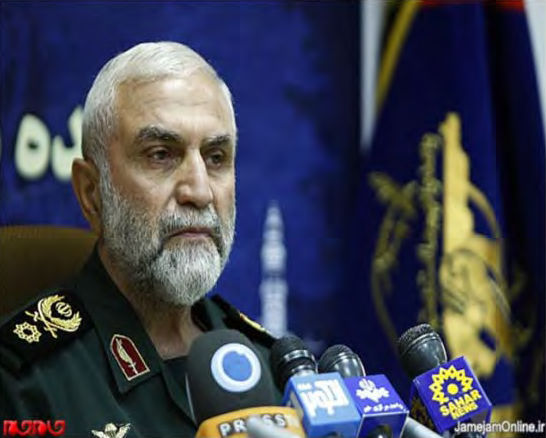
Brigadier General Hossein Hamedani, senior Iranian commander killed in Syria (Photo: Chavosh Homavandi)
Hossein Hamedani (Abu Wahab) was born in 1955. He was one of the founders of the IRGC, established following the Islamic Revolution in 1979. A short time after the revolution he was sent to fight the Kurdish separatists (known as the 1979 Kurdish rebellion in Iran) operating in northwestern Iran (as was Qasem Soleimani, today commander of the IRGC Qods Force). During the Iran-Iraq War he headed IRGC’s commands in various sectors of western Iran.
After the Iran-Iraq War Hossein Hamedani held various posts in the IRGC. He served as chief of staff of its ground forces, was deputy commander of the Basij (a semi-military IRGC militia), senior advisor to the IRGC commander and commanded the IRGC in Greater Tehran (the Rassoulollah Corps). As IRGC commander of Greater Tehran, Hamedani was responsible for suppressing the riots that broke out after the presidential elections in the summer of 2009. Because of the brutality he employed in suppressing the riots, in 2011 the EU put him on its list of senior Iranians against whom sanctions were imposed for human rights violations.
Hamedani as a Senior Advisor to the Syrian Regime
In recent years Hossein Hamedani served as the IRGC’s senior advisor in Syria. Since the outbreak of the civil war in Syria in 2011 the IRGC’s Qods Force has led the Iranian effort to prevent the collapse of the Syrian regime. Iran has provided Syria with military and political support, guidance, military advisors, and close coordination with the Syrian army and security forces. In addition, Iran handles proxies (Hezbollah and Shi’ite foreign fighters) that participate in the fighting. Iran fosters a terrorist infrastructure in the Golan Heights of local networks, exploiting the vacuum created by the Syrian army’s loss of control of the area (the local networks include Hezbollah, local Druze, and PIJ operatives).
After Hamedani’s death, Ema’il Kowsari, a member of the Iranian parliament (Majlis), said he had played a key role in establishing the “popular forces” operating alongside the Syrian regime, and had been important in keeping Damascus from falling to the rebels. He said Hamedani had helped coordinate between the Syrian forces and the volunteer fighters supporting them in their fight against ISIS, and that his plans were the main factor behind the Syrian “victory” over the “terrorists.” Kowsari claimed Hamedani had completed his mission in Syria a year ago and returned to Iran, but by virtue of his extensive familiarity with the battle zones in Syria, he had returned for a number of days (Tasnim News, October 9, 2015).
Statements from Hamedani about Syria
As senior military advisor in Syria, on a number of occasions in recent years Hamedani referred to the fighting in Syria and to Iran’s growing support for the Syrian regime. For example, in May 2014, in an exceptional statement, he said Iran had established a “second Hezbollah” in Syria and that the Basij operated “cultural centers” in 14 Syrian governates. At a conference in Hamedan he said that Iran shared with Syria the experience it had amassed during the Iran-Iraq War, and that if there were Iranian veterans [fighting] in the Syrian army, it would have no problem in dealing with the rebels. He added that a number of groups supporting the Syrian regime had been established in Iran to make the Syrian people and regime aware that the Iranian people supported them. He said that during the Iran-Iraq War Syria had provided Iran with considerable support and that Iran was now fighting in Syria to support Syrian national interests (Fars; Tasnim News, May 4, 2014).
In June 2015 Hamedani spoke at a conference of Basij lecturers in the Hamedan Province, where he said that Syria served as “strategic depth” for Iran. He said Syria had become the arena for the struggle between its enemies (the United States, Europe and the Arab states) and its friends (Iran, Russia and China). The objectives of the “enemy camp,” he said, were to restrict Iran’s regional influence, and to weaken Hezbollah, turning it from a military into a political organization. Its objective, he claimed, was safeguarding Israel’s security (Tasnim News, June 22, 2015).
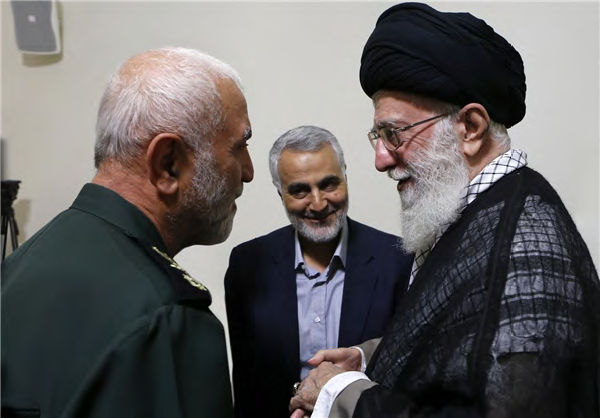
Hossein Hamedani (center), Qasem Soleimani (left) and Ali Khamenei (right) (Fars News Agency, October 10, 2015).



 RSS
RSS

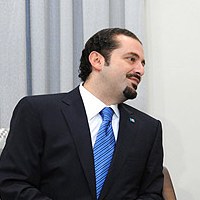

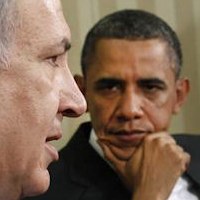






Latest Comments
Hello Mike, Thank you for your positive feedback to the article. I felt there wasn’t too much critical analysis of ...
Thanks for this considered and well constructed article. A follow up article on the manner in which the editorial contro...
THE CLUELESSNESS OF CLAIMING THAT OBAMA'S MIDDLE EAST POLICIES WERE A FAILURE CANNOT BE FURTHER FROM THE TRUTH, WHAT THE...
As long as Obama is the president of the usa do not trust the us government......
Thank you for an good read....